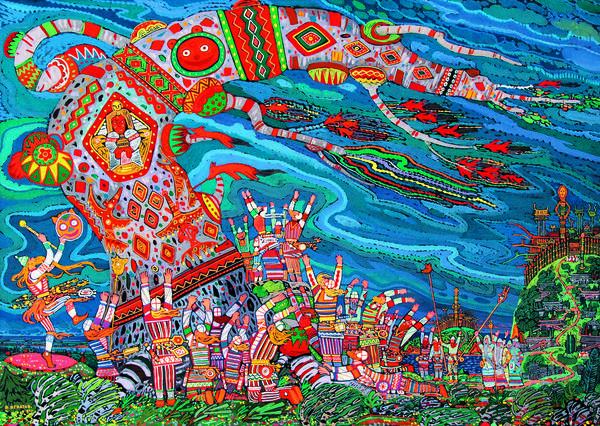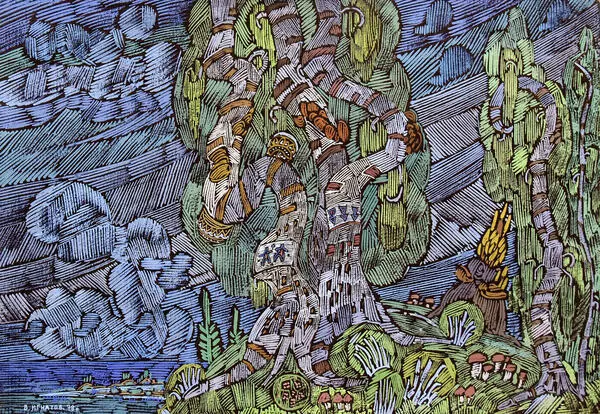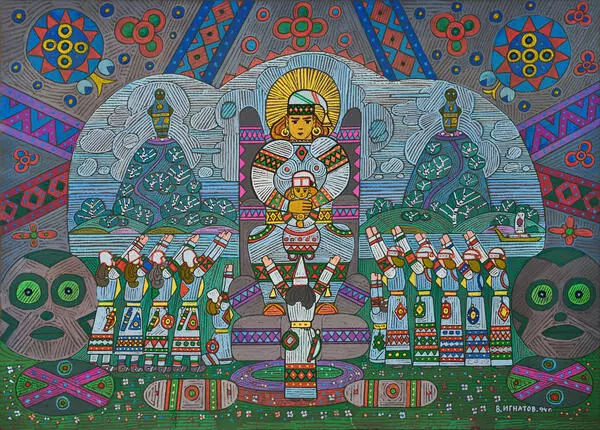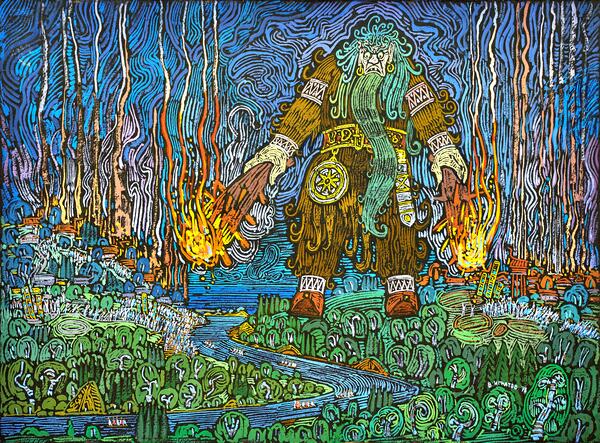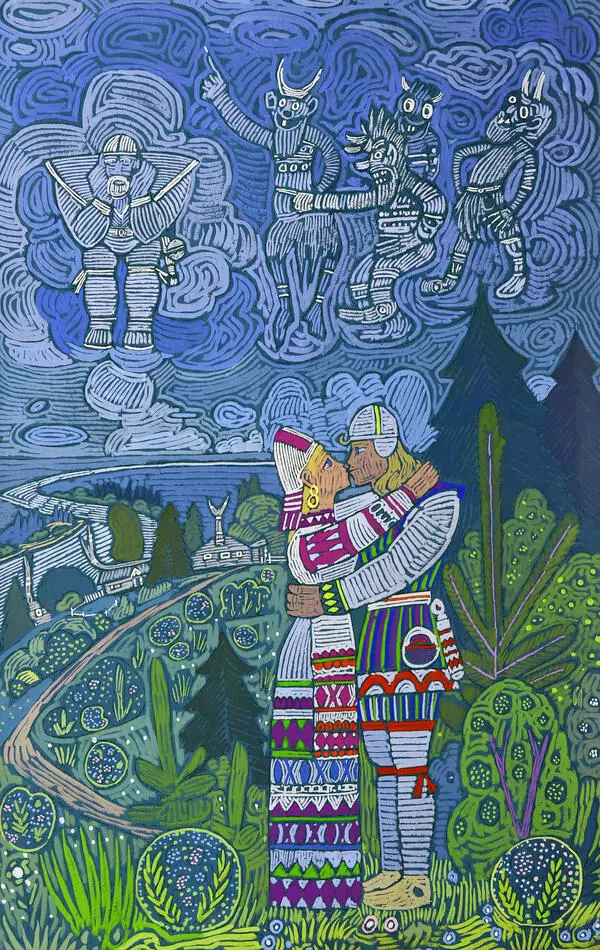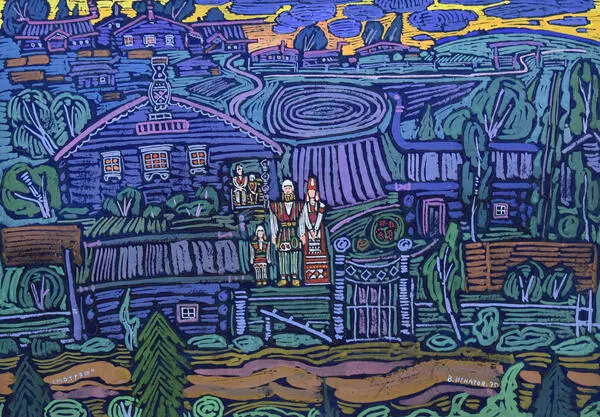Vasily Ignatov’s painting “Ecstasy” is also known as “Komi Pagans”. The second title reveals the painting’s idea, an attempt to illustrate the religious beliefs of ancient Komi using artistic images. The painting is centered around an act of sacrifice. The artist demonstrates that the participants are in contact with higher forces, reaching a state of religious ecstasy.
The spiritual impulse is interpreted using nature as a metaphor, with a tree trunk bent by a powerful gust of wind. A group of people prays to the tree, and a priest keeps up the rhythm of their prayers by performing a ritual dance with a tambourine. Most of the participants are men wearing hunting coats. They have brought gifts to the idol.
The branches are bedecked with animal hides, and the trunk is painted with images of the Perm animal style, with the most prominent one among them being an anthropomorphic deity. Apart from hunters, the characters include a mother with a child, symbolizing the passing of faith to the next generation.
The ritual takes place on a high riverbank where the curves of the river blend together with the dancing people. This image shows a complete unity of man and nature, their harmonious coexistence. Traditionally, Komi villages were situated along rivers. Ritual places of worship with heathen temples and idols were constructed on the highest point.
The Komi are people of the forest. Their mythology and worldview are associated with forest spirits and animals. Komi believed that various species of wood were of sacred meaning, and the most significant among them was the birch. It was around this tree that the ancient Komi built their places of worship. The birch symbolized the connection of the afterlife with the Visible Middle World and the Upper World.
One of the main religious legends of the Komi is associated with the image of the Indomitable Birch. In the 14th century, a bishop of the Russian Orthodox Church, later known as Stephen of Perm, came to the region. He burned pagan wooden idols and strove to convert the Komi to the Christian faith. Having arrived at a pagan temple, the bishop started chopping down the largest birch tree that the Komi considered to be a living idol. For three days, Stephen of Perm kept hacking at the tree which bled and howled in different voices. However, each morning, the tree was found perfectly intact. After the bishop eventually felled the tree, it turned to ashes immediately. Stephen of Perm laid the Church of the Archangel Michael at the spot where the Indomitable Birch used to grow.
